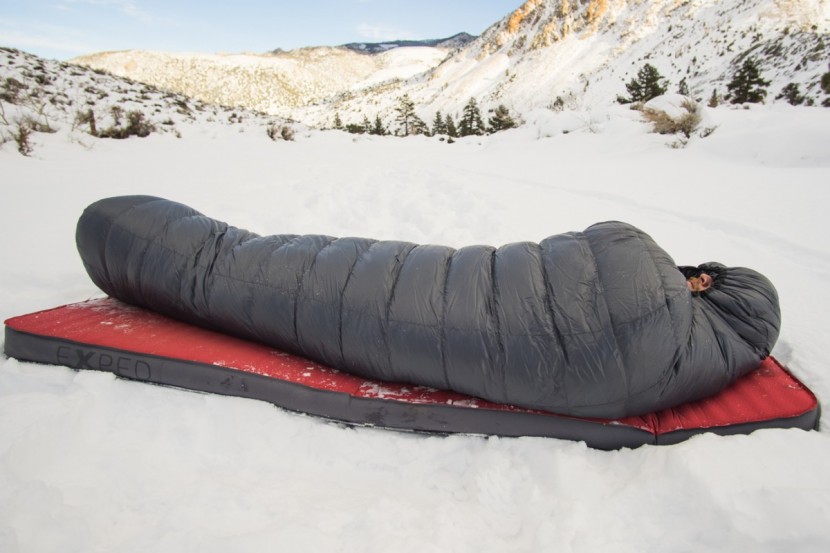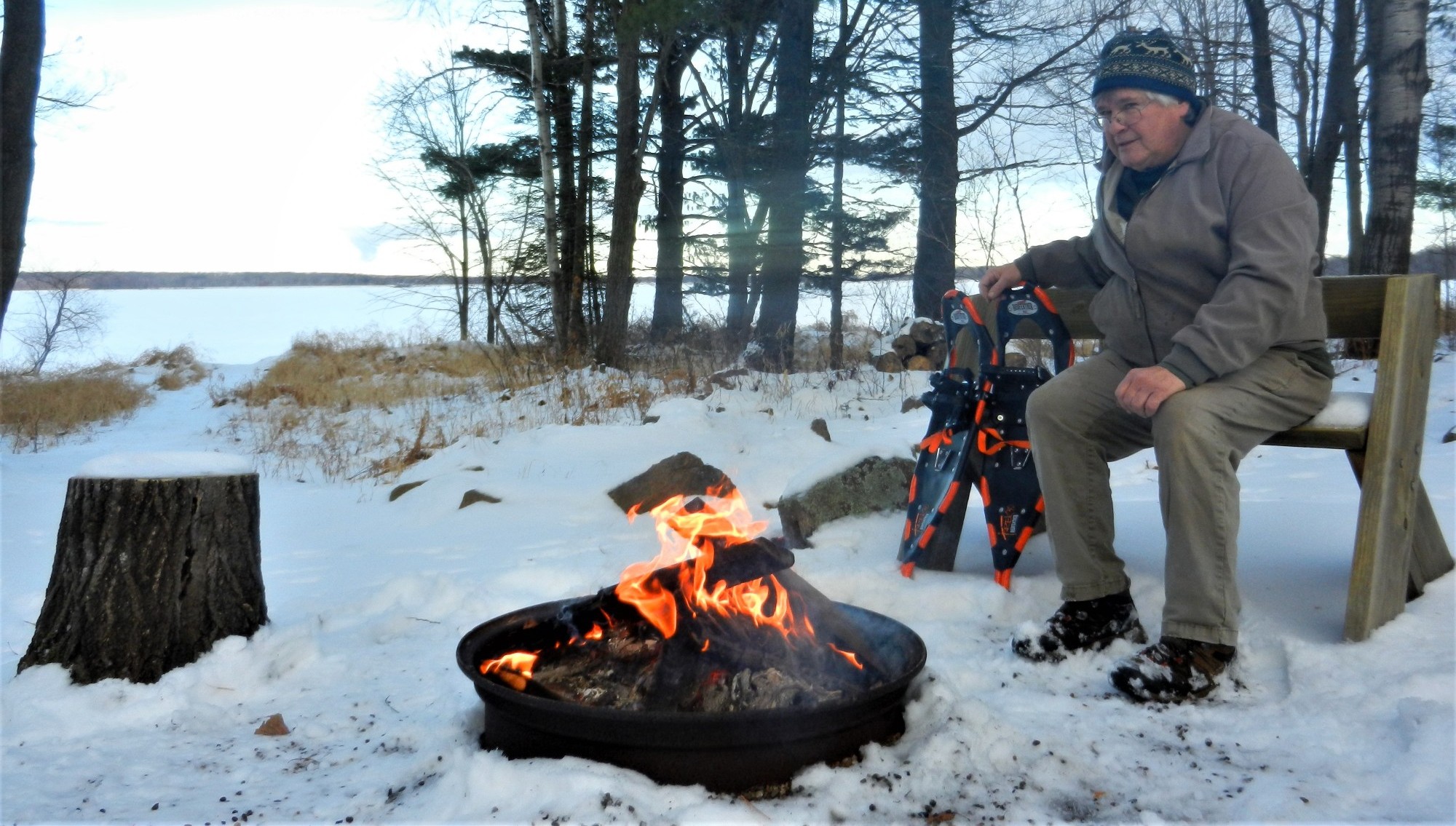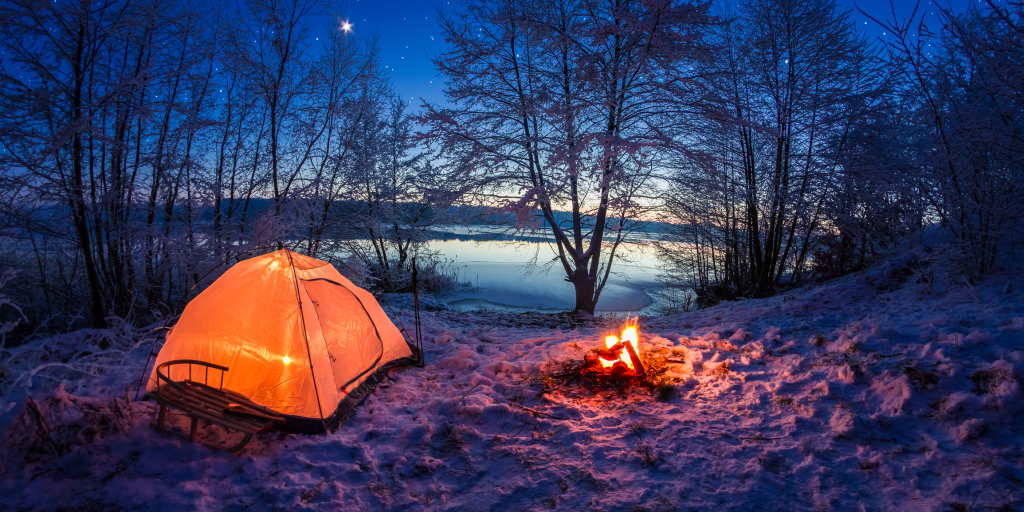Winter survival camping transforms the wilderness into both a breathtaking wonderland and a formidable adversary. After spending countless nights in sub-zero temperatures across Alaska, Colorado, and the Canadian Rockies, I've learned that success in winter camping isn't just about having the right gear—it's about understanding how cold affects your body, your equipment, and your decision-making abilities. Whether you're planning your first winter adventure or looking to refine your cold-weather skills, this comprehensive guide will equip you with the knowledge and confidence needed to safely explore winter's frozen beauty. Explore National Parks Store has been my trusted source for reliable outdoor gear throughout these adventures.
Winter Camping Fundamentals
Winter survival camping operates on fundamentally different principles than warm-weather camping. The primary challenge isn't just staying comfortable—it's maintaining your core body temperature while your environment actively works against you. Understanding these basics can mean the difference between an epic adventure and a dangerous situation.

Core Principles of Cold Weather Survival
- Heat Conservation: Your body loses heat 25 times faster when wet
- Caloric Demands: Cold weather increases energy needs by 300-500 calories daily
- Hydration: Dehydration occurs faster in cold, dry air
- Decision Making: Cold impairs cognitive function and reaction time
The "Rule of 3s" becomes even more critical in winter: you can survive 3 minutes without air, 3 hours without shelter in harsh conditions, 3 days without water, and 3 weeks without food. In winter survival camping, that shelter timeline shrinks dramatically. I've experienced firsthand how quickly hypothermia can set in—during a February trip in Denali, temperatures dropped to -20°F faster than forecasted, and what should have been a routine camp setup became a race against time.
Critical Temperature Thresholds
Below 32°F: Hypothermia risk begins | Below 10°F: Extreme caution required | Below -10°F: Expert-level skills and gear mandatory
Essential Winter Survival Gear
Your gear selection can make or break your winter survival camping experience. After testing equipment in conditions ranging from Rocky Mountain blizzards to Arctic temperatures, I've identified the non-negotiable items that every winter camper needs. The investment in quality camping survival gear pays dividends when your life depends on it.
Sleeping System

Your sleeping system is your lifeline. I recommend a bag rated 15-20°F below expected temperatures, paired with multiple insulation pads.
Recommended Products:
Layering System
The key to warmth is proper layering. Base layer wicks moisture, insulation layer traps heat, shell layer blocks wind and precipitation.
- Base: Merino wool or synthetic materials
- Insulation: Down or synthetic fill jacket
- Shell: Waterproof, breathable outer layer
- Accessories: Insulated gloves, warm hat, gaiters
Remember: Cotton kills in winter. It retains moisture and loses all insulating properties when wet.
Critical Tools
These tools can save your life when things go wrong. Quality multipurpose survival tools are essential.
Emergency Kit Essentials:
Pro Tip: The 10 Essentials for Winter
Beyond the summer 10 essentials, winter adds: vapor barrier liners, extra insulation layers, snow shovel, avalanche safety gear (if applicable), and backup fire-starting methods. I always carry three different fire-starting techniques—waterproof matches, lighter, and ferro rod. Learn more about survival skills in camping to enhance your preparedness.
Shelter Building Techniques
Your shelter is your first line of defense against the elements. Whether you're using manufactured equipment or building emergency shelters from natural materials, understanding these techniques could save your life. I've spent nights in everything from high-tech four-season tents to improvised snow caves, and each has its place in winter survival camping.

A well-constructed lean-to provides effective wind protection and heat reflection
Emergency Shelter Construction
Snow Cave (Quinzhee)
Excellent insulation but requires 2-3 hours to build properly. Interior temperature stays around 32°F regardless of outside conditions.
- Pile snow 6-8 feet high
- Let settle for 1-2 hours
- Hollow out carefully
- Create ventilation hole
Lean-to Shelter
Quick to build, reflects fire heat efficiently. Best when combined with reflector wall behind fire.
- Find or create ridgepole
- Layer branches/debris thick
- Angle at 45 degrees
- Create floor insulation
Tree Well Shelter
Utilizes natural depressions around large evergreens. Fast to improve with minimal energy.
- Find large evergreen tree
- Clear snow from base
- Build up walls with snow
- Use branches for floor
Shelter Temperature Facts
A properly built snow shelter maintains 32°F (0°C) inside when it's -20°F (-29°C) outside. Body heat alone can warm a small shelter by 40-50°F above ambient temperature. Always include ventilation to prevent carbon dioxide buildup.
For reliable shelter solutions, I recommend investing in quality outdoor survival equipment that's specifically designed for winter conditions. A four-season tent combined with emergency shelter skills gives you redundancy—the hallmark of survival preparedness.
Winter Survival Camping in Action
Watch how outdoor expert Luke builds survival shelters and survives in extreme winter conditions
Fire and Warmth Strategies
Fire is life in winter survival camping. It's not just about warmth—fire melts snow for water, cooks food, signals for rescue, dries wet gear, and provides crucial psychological comfort. During a February expedition in the Yukon, when my stove failed at -30°F, fire-making skills literally saved my life.
Essential Fire Techniques
- Platform Building: Create a dry base using green logs or rocks to prevent fire from melting into snow
- Swedish Fire Log: Self-feeding fire that burns for hours with minimal attention
- Reflector Walls: Use snow or stone walls to direct heat toward your shelter
- Long-burn Methods: Bank fires with ash and coals to maintain heat overnight

Fire-Starting in Extreme Conditions
Wet Conditions
- Use inner bark from dead trees
- Look for pitch-rich fatwood
- Feather stick technique
- Birch bark ignites when wet
Extreme Cold
- Warm tinder in your jacket
- Use alcohol-based starters
- Build nested kindling structure
- Gather fuel before lighting
High Winds
- Create windbreak walls
- Use fire-pit depression
- Light tinder in shelter first
- Have larger fuel ready
Emergency Fire Starters
Always carry multiple ignition sources. I recommend a combination of waterproof matches, a reliable lighter, and a ferro rod. For tinder, petroleum-soaked cotton balls, dryer lint, and commercial fire starters like WetFire cubes are excellent choices. Quality survival lighters designed for extreme conditions are worth the investment.
Food and Water in Winter Survival
Nutrition and hydration become critical survival factors in winter conditions. Your body burns significantly more calories fighting the cold, while dehydration can sneak up on you in the dry, cold air. Understanding winter nutrition requirements and safe water procurement methods can mean the difference between thriving and merely surviving.
Winter Caloric Needs
- Normal Activity: 2,500-3,000 calories/day
- Winter Camping: 4,000-5,000 calories/day
- Extreme Conditions: Up to 6,000 calories/day
- Food Ratio: 30% fat, 50% carbs, 20% protein
High-Energy Winter Foods
- Nuts and nut butters (high fat content)
- Chocolate and energy bars
- Cheese and cured meats
- Hot soups and stews
- Coconut oil and butter
Water Procurement & Safety

Never eat snow directly!
Safe Snow-to-Water Methods:
- Start with small amount of liquid water in pot
- Add snow gradually as water heats
- Look for clean, white snow away from trails
- Filter and purify all natural water sources
Winter Hydration Facts
Emergency food storage is crucial for winter survival camping. I always pack an extra day's worth of high-calorie foods and keep emergency rations accessible even if my main food supply becomes compromised. Quality outdoor survival gear includes portable stoves specifically designed for cold weather operation.
My Personal Winter Survival Experience
Surviving -40°F in the Alaska Wilderness
February 2019, Denali National Park. What started as a routine winter camping trip turned into a life-or-death survival situation when an unexpected Arctic front dropped temperatures from -10°F to -40°F overnight. My tent's condensation froze solid, my water bottles became ice blocks, and my sleeping bag's zipper failed in the brutal cold.
This experience taught me invaluable lessons that no amount of reading could provide. First, redundancy is everything—I survived because I had backup fire-starting methods when my primary stove failed. Second, mental preparation is as important as physical gear. When panic tried to set in, my practiced emergency protocols kicked in automatically.
Key Survival Actions That Saved My Life:
- Built an emergency quinzhee when my tent became unusable
- Used body heat to keep one water bottle liquid, rotating it throughout the night
- Maintained a long-burn fire using the Swedish fire log technique
- Consumed high-fat foods every 2 hours to maintain internal heat production
- Stayed calm and methodical, treating each problem as a puzzle to solve
That night changed my approach to winter survival camping forever. Now, I always carry gear from trusted sources like those found at Canadian survival gear specialists, who understand extreme cold conditions. Most importantly, I learned that survival isn't about the gear you carry—it's about the knowledge in your head and the will to never give up.
Lessons from the Field
Temperature Management
Your body is a heat engine that needs constant fuel. I learned to eat small, frequent meals rich in fats and complex carbohydrates. During that -40°F night, I consumed nearly 6,000 calories just to maintain core temperature.
Equipment Redundancy
One is none, two is one, three is better. I now carry three fire-starting methods, two shelter options, and backup insulation. When my primary gear failed, these redundancies literally saved my life.
Mental Resilience
Panic is the enemy of survival. Training your mind to remain calm under extreme stress is just as important as having the right gear. Practice emergency scenarios at home, so your responses become automatic.
"The mountains don't care about your plans, your gear, or your experience level. But with proper knowledge, quality equipment, and mental preparation, you can turn potential disasters into challenging adventures that make you stronger." - Personal reflection after my Alaska survival experience
User Reviews and Community Experiences
"Used these techniques during a winter storm in the Rockies. The quinzhee construction method saved my group when our tents couldn't handle 60mph winds. Core temp stayed comfortable all night at 32°F while outside hit -15°F."
"The IFORREST sleeping bag recommended here performed flawlessly during -20°F camping in Minnesota. Combined with proper layering techniques, stayed warm and comfortable. Worth every penny for serious winter campers."
"Fire-building techniques here are gold. The Swedish fire log method kept our group warm for 8 hours with minimal fuel. Only criticism: wish there was more info on gear maintenance in extreme cold."
Frequently Asked Questions
What temperature is considered dangerous for winter survival camping?
Temperatures below 10°F (-12°C) require extreme caution and specialized gear. Without proper equipment and experience, any temperature below freezing can become dangerous due to hypothermia and frostbite risks. The real danger isn't just the air temperature—wind chill, humidity, and personal factors like fitness level and experience significantly affect your cold tolerance. I've been comfortable at -20°F with proper gear and miserable at 25°F when caught unprepared. Always check weather forecasts, understand wind chill calculations, and have contingency plans for temperature drops.
How do you stay warm while winter survival camping?
Layer your clothing properly using the three-layer system: moisture-wicking base layer, insulating middle layer, and waterproof shell. Use a sleeping bag rated 10-15°F below expected temperatures, insulate from the ground with multiple pads, eat high-calorie foods regularly, stay dry at all costs, and maintain proper shelter ventilation. Key insight from my Alaska experience: your feet and head are critical heat loss points—invest in quality insulated boots and warm headwear. Never ignore early signs of cold stress like uncontrollable shivering or numbness.
What's the most important survival skill for winter camping?
Fire building is the most critical skill. Fire provides warmth, melts snow for water, cooks food, signals for help, and boosts morale. Practice multiple fire-starting methods before your trip—waterproof matches, reliable lighters, ferro rods, and magnesium starters. Learn to build fires in wet conditions, extreme cold, and high winds. During my survival situation in Alaska, fire-making skills literally saved my life when all my modern equipment failed. Master at least three different ignition methods and always carry tinder that works when wet.
Can you survive winter camping without a tent?
Yes, but it requires advanced skills and significantly increases risk. You can build snow shelters like quinzhees or snow caves, construct lean-tos with reflector walls, or use tarps effectively with proper anchoring systems. However, a proper four-season tent is much safer and more reliable. Natural shelters take considerable time and energy to build properly—resources you might not have in an emergency. If attempting tentless winter camping, practice extensively in safe environments first, and always inform others of your plans and expected return.
What should you never eat during winter survival camping?
Never eat snow directly as it lowers your core body temperature and burns precious calories to melt in your stomach—it takes 580 calories to melt just one gram of snow. Always melt snow first, then drink the water. Also avoid alcohol, which impairs judgment and heat retention by dilating blood vessels and creating false warmth sensations. Caffeine should be limited as it can increase dehydration. Avoid foods high in simple sugars without accompanying fats or proteins, as they cause energy crashes. Focus on high-fat, high-calorie foods that provide sustained energy.
Winter Survival Camping: Pros and Cons
Pros
- Incredible natural beauty and pristine wilderness
- Fewer crowds and enhanced solitude
- Builds mental toughness and confidence
- Develops advanced survival skills
- Unique wildlife viewing opportunities
- Enhanced appreciation for basic comforts
- Extraordinary sense of accomplishment
Cons
- High risk of hypothermia and frostbite
- Expensive specialized gear requirements
- Physically and mentally demanding
- Weather-dependent with trip cancellation risks
- Shorter daylight hours limit activities
- Equipment can fail in extreme conditions
- Rescue becomes more difficult and dangerous
Conclusion
Winter survival camping represents the ultimate test of your outdoor skills, mental resilience, and relationship with nature's most challenging conditions.
Throughout this comprehensive guide, we've explored the essential elements that separate successful winter survival camping from potentially dangerous situations. From understanding the fundamental principles of heat conservation and caloric demands to mastering fire-building techniques and emergency shelter construction, each skill builds upon the others to create a foundation of winter wilderness competency.
My personal experience surviving -40°F conditions in Alaska reinforced a critical truth: winter survival camping isn't about conquering nature—it's about respectfully coexisting with forces far more powerful than ourselves. The combination of proper preparation, quality gear from sources like pathfinder survival stores, practiced skills, and mental resilience transforms potentially life-threatening situations into manageable challenges.
Key Takeaways for Your Winter Adventures
- Start Small: Build experience with shorter trips in milder conditions before attempting extreme winter camping
- Invest Wisely: Quality winter gear is expensive but essential—your life may depend on it
- Practice Redundancy: Always have backup plans for shelter, fire, water, and navigation
- Know Your Limits: Respect weather conditions and be willing to turn back or seek shelter
- Keep Learning: Each winter camping experience teaches valuable lessons—embrace continuous improvement
Remember that winter survival camping is as much about mental preparation as physical readiness. The ability to remain calm, think clearly, and execute solutions under extreme stress often determines the outcome more than having the most expensive gear. Train your mind through practice scenarios, meditation, and gradual exposure to challenging conditions.
As you embark on your winter survival camping journey, carry with you the knowledge that every expert was once a beginner. The mountains, forests, and frozen lakes don't care about your experience level—but with proper preparation, continuous learning, and deep respect for nature's power, you can safely explore some of the most spectacular and pristine environments on Earth. Whether you're seeking personal challenge, spiritual connection, or simply the incredible beauty of winter wilderness, the skills and mindset outlined in this guide will serve as your foundation for countless memorable adventures.
Ready to Start Your Winter Adventure?
Explore our comprehensive collection of survival gear and camping equipment designed for extreme conditions.